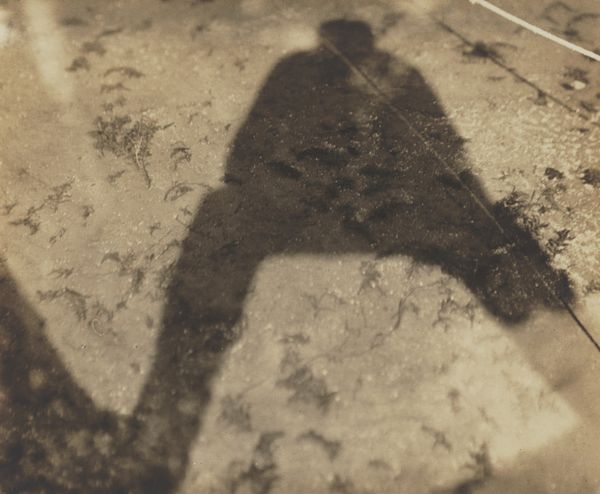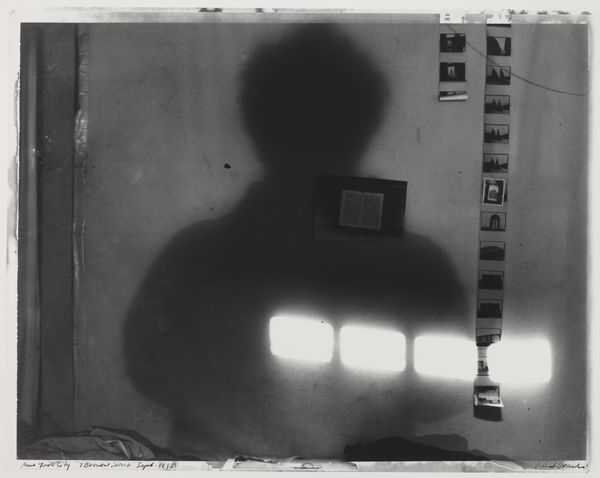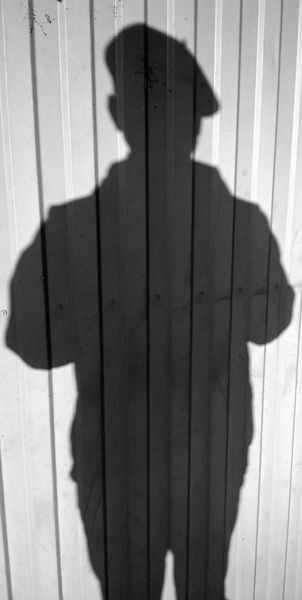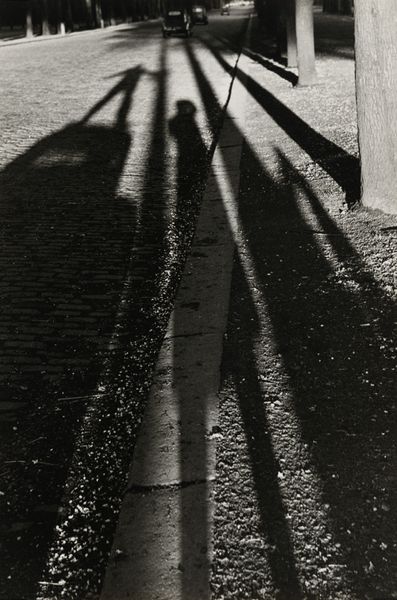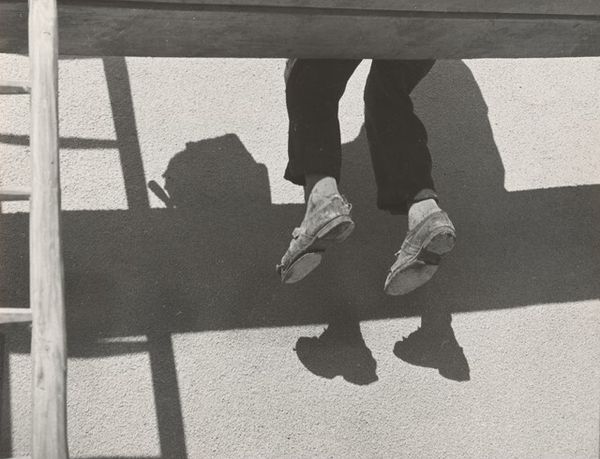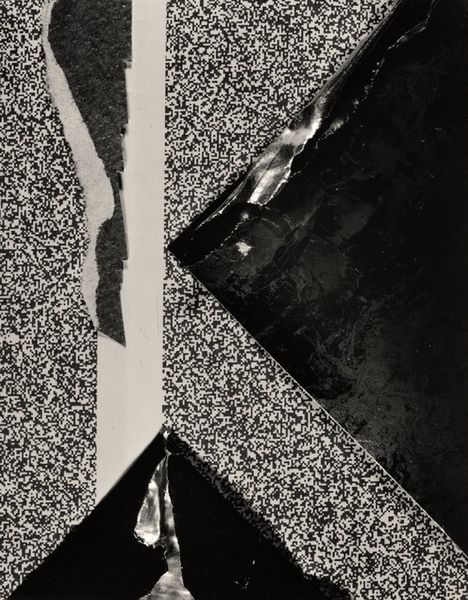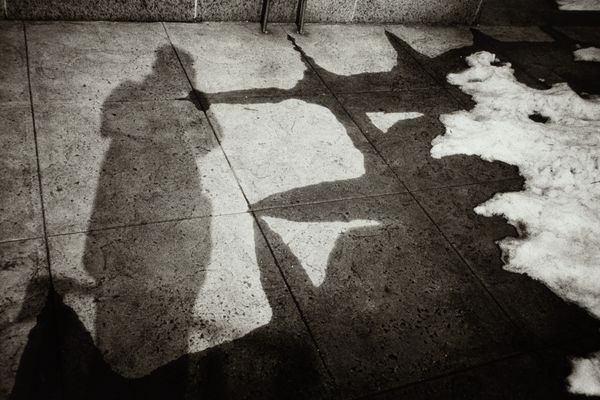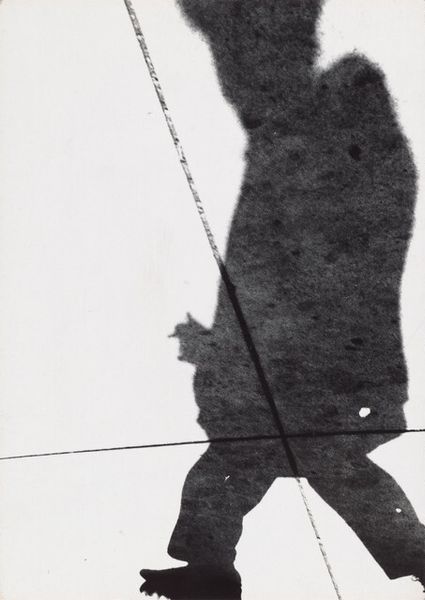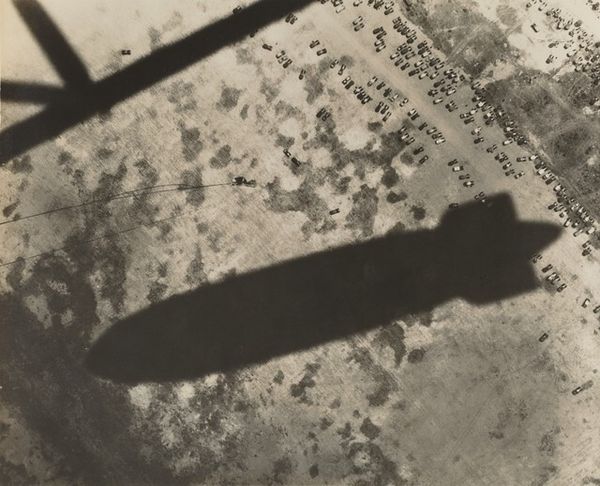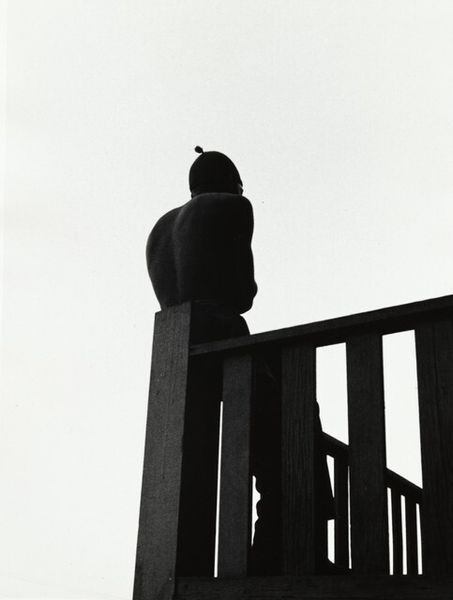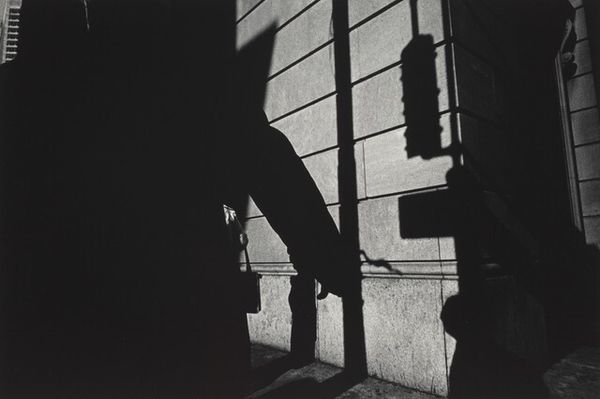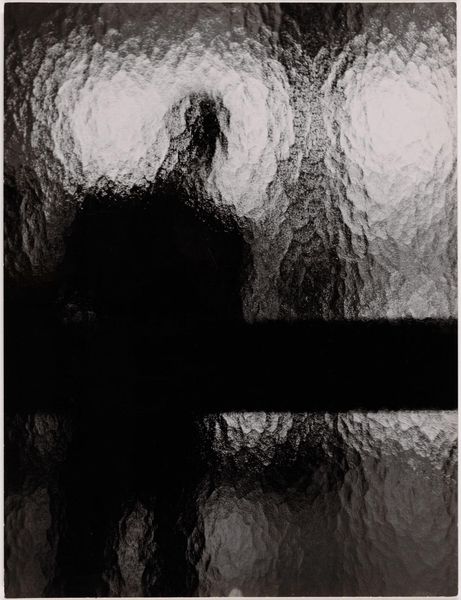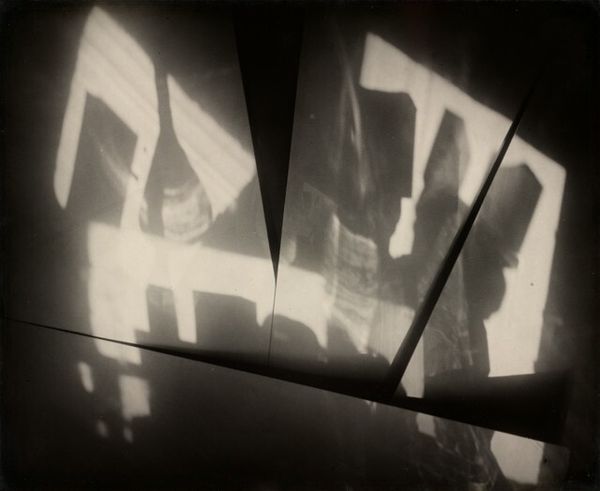
photography
#
portrait
#
street-photography
#
photography
#
geometric
#
black and white
#
realism
Dimensions: sheet (trimmed to image): 19.6 x 13.9 cm (7 11/16 x 5 1/2 in.)
Copyright: National Gallery of Art: CC0 1.0
Editor: Here we have Marvin Newman's "Shadow, Chicago," a photograph taken in 1951. It's a high contrast image, almost entirely black and white, depicting exactly what the title says: a shadow. It's such a simple, stark composition. I am intrigued by its abstract form despite being something so ordinary as a shadow. How do you interpret this work? Art Historian: What grabs me immediately is how the artist utilizes shadow, something ephemeral, as the primary subject. Shadows inherently possess a psychological weight – they represent the unseen, the subconscious. Think of Plato’s Allegory of the Cave, shadows distort perception and challenge reality. Here, what is highlighted – or rather, shadowed – hints at more than it shows. What narratives might this evoke in you? Editor: It does create a sense of mystery. It seems the shadow belongs to a figure in a hat and coat... but the form is blurry, lacking detail. It becomes more about suggestion than a clear representation. Art Historian: Precisely. And in obscuring details, the photograph transcends simply documenting a person’s shadow. It explores themes of anonymity, the individual lost within the urban landscape. In post-war America, that sense of identity was both celebrated and challenged by social pressures. Do you see any evidence of those tensions within the composition itself? Editor: Now that you mention it, yes! The harsh lines crossing the frame disrupt the figure, creating a sense of unease or constraint. Also, there is a strange shape on its chest. It kind of diminishes this person... it is strangely poetic. Art Historian: Indeed. This makes you ponder, doesn't it? It's as if Newman captured a fleeting moment not just of light and shadow, but of cultural anxieties, individual agency within larger social structures. It prompts us to think about the interplay between identity and environment. Editor: I see it differently now. It is not merely an aesthetic capture; there is a depth I initially missed. Thank you! Art Historian: My pleasure. Art is about peeling back layers and seeing how imagery echoes our collective memory and individual experiences.
Comments
No comments
Be the first to comment and join the conversation on the ultimate creative platform.
